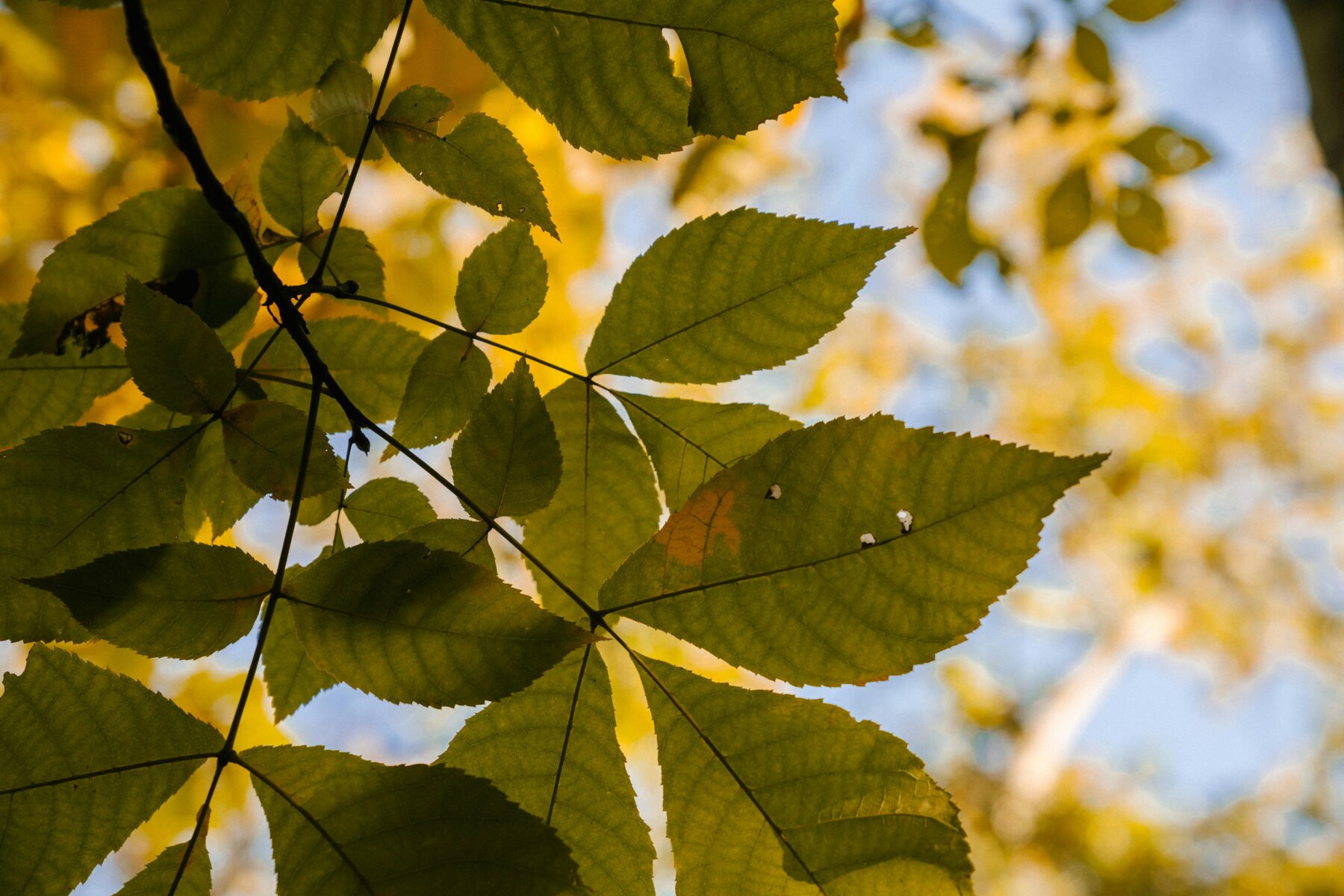
Position Statement: Ash Dieback
Ash dieback is changing our Surrey Hills landscape and will have a dramatic localised impact on the North Downs where ash established as the dominant woodland following the Great Storms of 1987 and 1990.
What are the key issues?
Ash dieback is a chronic fungal infection that is affecting the ash population across Europe and the UK. An infected tree is noticeable for its loss of leaves, wilting, lesions in the bark and stems of trees, and discolouration of the bark.
It’s estimated there are almost 1,000 species of wildlife that have an association with ash, with 45 of these being wholly dependent on the tree. This means the loss of ash poses a risk to the habitat of these species.
The invasive fungus makes some trees brittle, which could lead to them becoming unstable or shedding limbs. Infected ash trees along public rights of way or established trails could pose a threat to people enjoying these routes.
What is our goal?
In the Surrey Hills we want to encourage woodland owners and land managers to allow for nature to be the solution as much as possible. This can happen by allowing safe areas to naturally decay, only dealing with trees where they are a danger to people. This could help transform our woodlands for the better, increasing species richness in the woodlands over time.
The aim is to remove trees where they pose a threat to people, such as by roads or busy footpaths and close or re-route people away from badly affected areas where possible onto open land. This will allow the greatest possible area to naturally decay over time that will be of great benefit to woodland wildlife, from fungi and insects which thrive on the deadwood, to the mammals and birds that live off them. This approach could transform our woodlands for the better.
Clear felling areas of woodland is damaging and means that healthy and disease resistant trees are also destroyed, whereas the benefits of allowing Infected trees that are in safe locations to naturally decay will:
– Provide a huge amount of deadwood habitat which will become home to a vast array of wildlife such as fungi and insects. These changed habitats will improve biodiversity as a result
– Increase light levels resulting from the ash trees dying. This will stimulate new growth and regeneration of other plants.
– Mean that resilient ash trees will survive, and their seeds will naturally regenerate new growth, meaning that ash can remain a part of our countryside in the future.
What should landowners do?
In affected ash woodlands with open access, visitors should be encouraged through sensitive signage to keep to the main inspected tracks and to sensitively discourage access along desire lines through sensitive measures such as dead hedging, which volunteers can create and manage.
Trees should be individually assessed, including a habitat impact assessment. Tree owners have a duty of care for the preservation of trees and to ensure they remain in a safe condition. Felling a tree without the proper permissions and ensuring protection for wildlife may result in legal implications.
We would recommend getting in touch with a woodland or tree professional who can help formulate a measured plan of action for tackling ash dieback in a specific location. It is important that this plan incorporates best practice guidance and is undertaken in phases so that it minimises the negative impacts of removing a tree. It is also important to retain any ash tree that has a natural resistance to the disease.
In the Surrey Hills, there should be careful consideration of the impact on landscape, environment, and biodiversity immediately after felling, as well as considering the recovery phase. It may be beneficial to wildlife to leave any felled wood in the environment than remove it all.
For more information see:
Managing ash trees affected by ash dieback: operations note 46a – GOV.UK (www.gov.uk)
A Farmer’s Guide to Ash Dieback by linking-environment-and-farming – Issuu